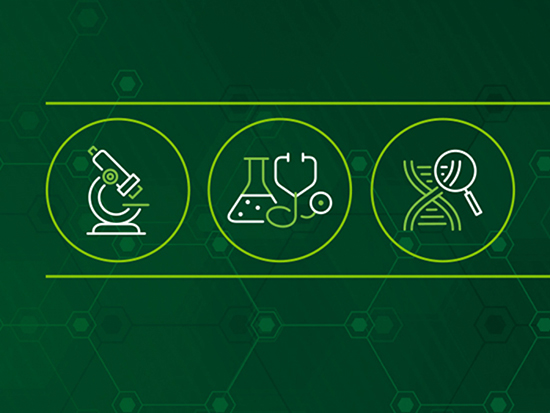 More than 100 faculty and staff are driving progress through their membership in the six working groups of the UAB Research Strategic Initiative. At a recent gathering, co-chairs shared their appreciation for the initiatives underway across campus and the serendipitous timing of the Research Strategic Initiative, which gave UAB a head start on reimagining its research infrastructure — a process that is now underway at institutions nationwide.
More than 100 faculty and staff are driving progress through their membership in the six working groups of the UAB Research Strategic Initiative. At a recent gathering, co-chairs shared their appreciation for the initiatives underway across campus and the serendipitous timing of the Research Strategic Initiative, which gave UAB a head start on reimagining its research infrastructure — a process that is now underway at institutions nationwide.
“We want to make sure that every part of our research enterprise is optimized,” said UAB President Ray Watts, M.D. He noted that the extensive stakeholder interviews and surveys that began the Research Strategic Initiative strongly supported the need to enhance in infrastructure, systems, processes and pipelines throughout the institution. Following the submission and approval of annual work plans from each of the working groups in spring 2025, the past few months have seen noticeable progress.
Examples include:
Working Group 1: Optimize Research-Related Processes
The Academic Research Organization for Clinical Trials, or ARO-CT, has been established to act as a central hub supporting clinical trials activities, including contracting, clinical billing review, financial services, regulatory affairs, industry relations and the OnCore clinical trials management system. This will allow UAB to efficiently scale up clinical trials accruals by streamlining processes required for study startup and conduct. Ongoing efforts to optimize the processes within the ARO-CT framework are already yielding results. The median time for completing a clinical trial agreement has decreased by 40 percent, from 140 calendar days in 2022 to 84 days in 2025.
See the annual work plan summary from Working Group 1.
Working Group 2: Research Technology
The initial implementation phase of myUABResearch, the university’s new electronic research administration system, is on target for its go-live date of November 2025. This phase has also provided an opportunity to closely examine existing research administration processes and reengineer them to improve efficiency and streamline operations.
See the annual work plan summary from Working Group 2.
Working Group 3: Enhance Research Data Management and Structure
UAB’s scalable computing infrastructure is being expanded to support emerging, computationally intensive research priorities in an efficient and competitive manner.
See the annual work plan summary from Working Group 3.
Working Group 4: Employment Destination
An updated Research Career Ladder has been developed through a collaborative process between Human Resources and focus groups. Career ladders updated and/or developed include those in the fields of General Research, Clinical Research and Data Sciences.
See the annual work plan summary from Working Group 4.
Working Group 5: Augment and Elevate the Research Administration Workforce
The group is making progress in enhancing research administration by standardizing job titles, optimizing staffing and strengthening the Research Development Office. Ongoing data collection and benchmarking efforts are already informing improvements in staffing structures and support for interdisciplinary research.
See the annual work plan summary from Working Group 5.
Working Group 6: Optimize and Enhance Facilities
Master space plans, including for research space, are being considered across all schools and units to ensure equitable and appropriate distribution of space. Alongside this, the group is progressing with a task force reviewing institutional core funding and an advisory group promoting the Green Labs Program, reflecting UAB’s commitment to sustainability.
See the annual work plan summary from Working Group 6.
“It is timely for UAB to address infrastructure opportunities that matter to investigators across our institution,” said Chris Brown, Ph.D., vice president for Research. “I am grateful for the efforts of the working group members and their commitment to making the UAB research enterprise resilient. As we move forward, we must continue to prioritize low-cost, high-impact strategies to make the most of our resources in protecting and preserving our research.”